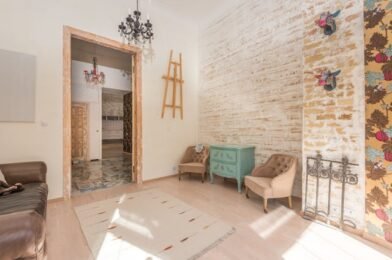Restoring vintage furniture is an art form that not only revives the beauty of bygone eras but also offers a unique way to add character and individuality to your living spaces. In a world increasingly focused on sustainability and eco-conscious choices, breathing new life into old furniture has become an enticing trend. This process isn’t just about preserving history; it’s about creating functional and stylish pieces that seamlessly blend the past with the present. So, how can you embark on this journey of transformation?
The first step in this exciting process is discovering the perfect vintage piece. It could be a forgotten gem hiding in your attic, a garage sale find, or a treasure spotted at a local thrift store. Keep an open mind and look beyond the dust and scratches. Visualize the potential that lies beneath, and imagine how it might enhance your modern living space.
Once you’ve found your vintage gem, it’s time to assess and plan the restoration process. Thoroughly inspect the furniture for any structural damage, loose joints, or broken parts. Understanding the scope of work ahead is crucial. Depending on your skill level, you might choose to tackle the restoration yourself or seek the expertise of a professional restorer.
The restoration itself can be a rewarding, albeit challenging, experience. Start by disassembling the furniture (if necessary) and carefully clean each component. This could involve removing years of dirt and grime, requiring patience and the right cleaning agents. Next, repair any structural issues, ensuring the furniture’s stability and longevity.
One of the most exciting aspects of restoration is refinishing. This step involves stripping the old finish, sanding the wood to a smooth finish, and then applying a new coat of stain or paint. Consider the desired aesthetic and how it will fit into your current decor. Will you stay true to the original color and finish, or inject a contemporary twist with a bold new hue?
When it comes to upholstery, you have an opportunity to truly personalize your vintage furniture. Select fabrics that not only complement the era of the piece but also your modern lifestyle. From plush velvet to durable cotton, the choice of fabric can significantly impact the overall look and feel.
As you complete the restoration, take pride in the fact that you’ve not only acquired a unique piece of furniture but also contributed to sustainable living. Restored vintage furniture tells a story, and each piece becomes a conversation starter in your home. It’s a blend of history and innovation, a testament to your creativity and commitment to sustainability.
Moreover, incorporating these restored pieces into your daily life adds a touch of individuality and charm. Whether it’s a dining table that becomes the focal point of family gatherings or a refurbished armchair that offers a cozy reading spot, each item has a story to tell.
In the world of interior design, restored vintage furniture is an increasingly popular choice. It allows for a unique blend of vintage aesthetics and modern functionality, catering to those seeking both character and practicality. So, whether you’re an avid DIY enthusiast or prefer to leave it to the experts, transforming old furniture into new elements is an adventure worth exploring.
In conclusion, restoring vintage furniture is more than just a hobby; it’s a sustainable approach to interior design that can add immense value to your home. It encourages creativity, fosters a connection with the past, and ultimately contributes to a more personalized living space. So, are you ready to embark on this rewarding journey of transformation?










